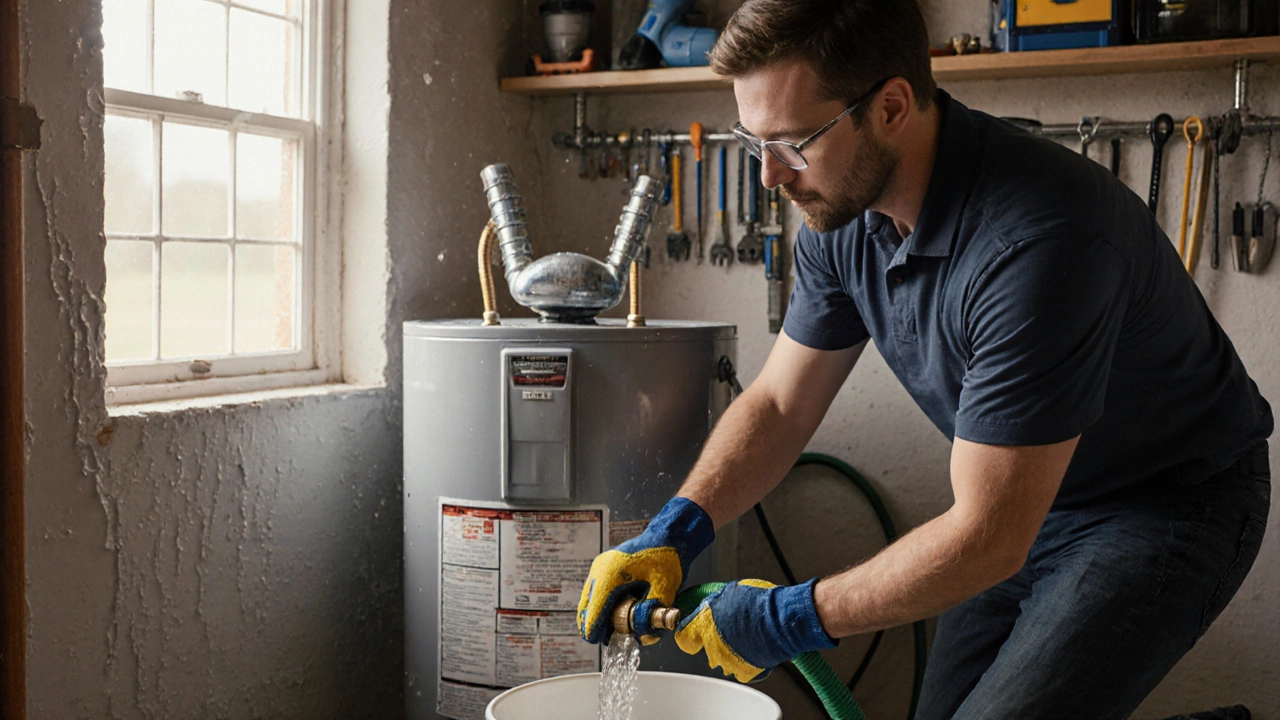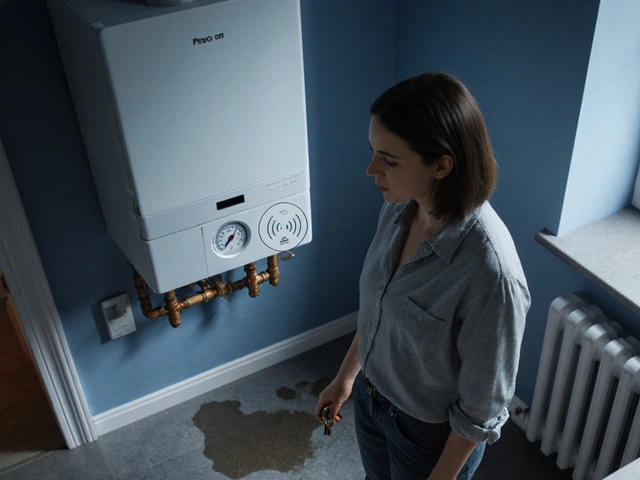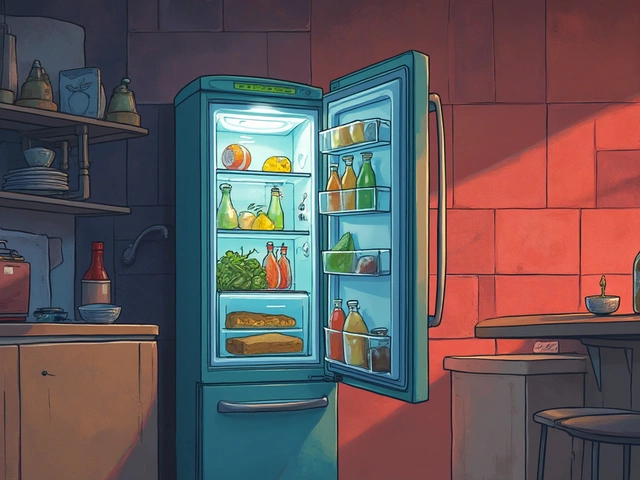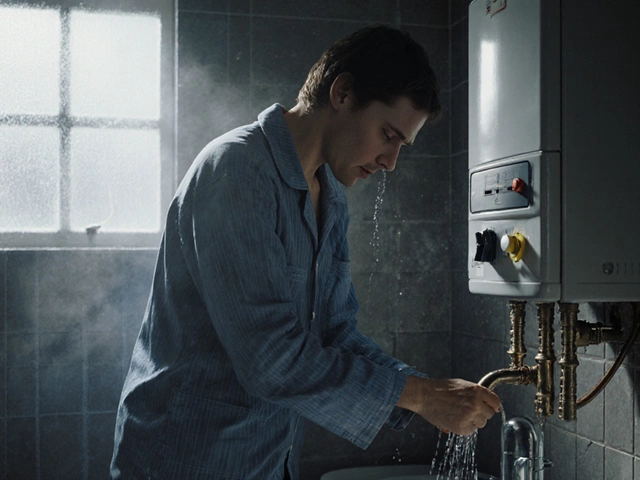Water Heater Flush Reminder Calculator
Your Water Heater Flush Schedule
Calculate when you should perform your next water heater flush based on your location's water hardness and previous maintenance.
Most people don’t think about their water heater until the hot water runs out faster than usual, or the shower turns icy mid-rinse. If you’ve noticed strange noises, rusty water, or lower pressure, the culprit might be sediment buildup. And the simplest fix? Flushing your water heater. Yes, you can do it yourself - no plumber needed. In fact, doing it once a year can extend your heater’s life by years and save you hundreds in repairs.
Why flushing your water heater matters
Over time, minerals in your water - especially calcium and magnesium - settle at the bottom of the tank. This isn’t just dirt. It’s hard, rock-like sediment that acts like insulation. That means your heater has to work harder to warm the water, which spikes your energy bill. It also causes the bottom element or gas burner to overheat, leading to premature failure.
In Adelaide, where water hardness ranges from moderate to high, sediment builds up faster than in coastal areas. A 2023 study by the South Australian Water Corporation found that homes with hard water saw 40% more sediment accumulation in water heaters than those with soft water. If you haven’t flushed yours in over a year, you’re already losing efficiency.
Flushing removes this sludge. It’s not a magic fix for a broken heater, but it’s the single most effective maintenance step you can take to keep it running smoothly.
What you’ll need before you start
You don’t need fancy tools. Just a few basic items:
- A garden hose (at least 5 meters long)
- A bucket (optional, for testing water clarity)
- Work gloves and safety glasses
- A wrench (if your drain valve is stiff)
- A towel or old rags
Don’t skip the gloves and glasses. Hot water and sediment can spray unexpectedly. And if your drain valve is old or corroded, it might break when you turn it. Better to be safe.
Step-by-step: How to flush your water heater
Follow these steps carefully. Skipping one can lead to damage or injury.
- Turn off the power. For electric heaters, flip the circuit breaker. For gas heaters, turn the dial on the unit to "Pilot" or "Off." Never flush a heater with power still on - you risk burning out the element or causing a gas leak.
- Shut off the cold water supply. Look for the valve on the pipe coming into the top of the heater. Turn it clockwise until it’s tight. This stops new water from entering the tank while you drain it.
- Let the water cool. Wait at least two hours. Flushing hot water is dangerous. If you’re in a hurry, open a hot water tap in your house to release pressure and speed up cooling.
- Attach the hose to the drain valve. The valve is usually near the bottom of the tank. Place the other end of the hose where you want the water to go - outside, into a floor drain, or a large bucket. Make sure the hose is secure. A loose connection can spray scalding water.
- Open the pressure relief valve. This is the small metal pipe sticking out of the top of the heater. Lift the lever slightly to release pressure. You’ll hear air hiss. This lets water flow out smoothly. Leave it open.
- Open the drain valve. Turn it counterclockwise slowly. Water will start flowing. Let it drain for 10-15 minutes, or until it runs clear. If the water is still cloudy or has grit, keep draining.
- Flush until clear. This is the key. Clear water means most sediment is gone. If you’re unsure, catch a cupful in a bucket. Look for sand, rust, or flakes. If you see any, keep going. Don’t rush this part.
- Close the drain valve and remove the hose. Once the water runs clear, turn the valve clockwise to shut it. Remove the hose. Wipe any drips with a towel.
- Turn the cold water back on. Let the tank refill. Wait until hot water flows from a nearby tap - this means the tank is full.
- Restore power. Turn the breaker back on or switch the gas valve to "On." For gas heaters, relight the pilot if needed (follow the manufacturer’s instructions).
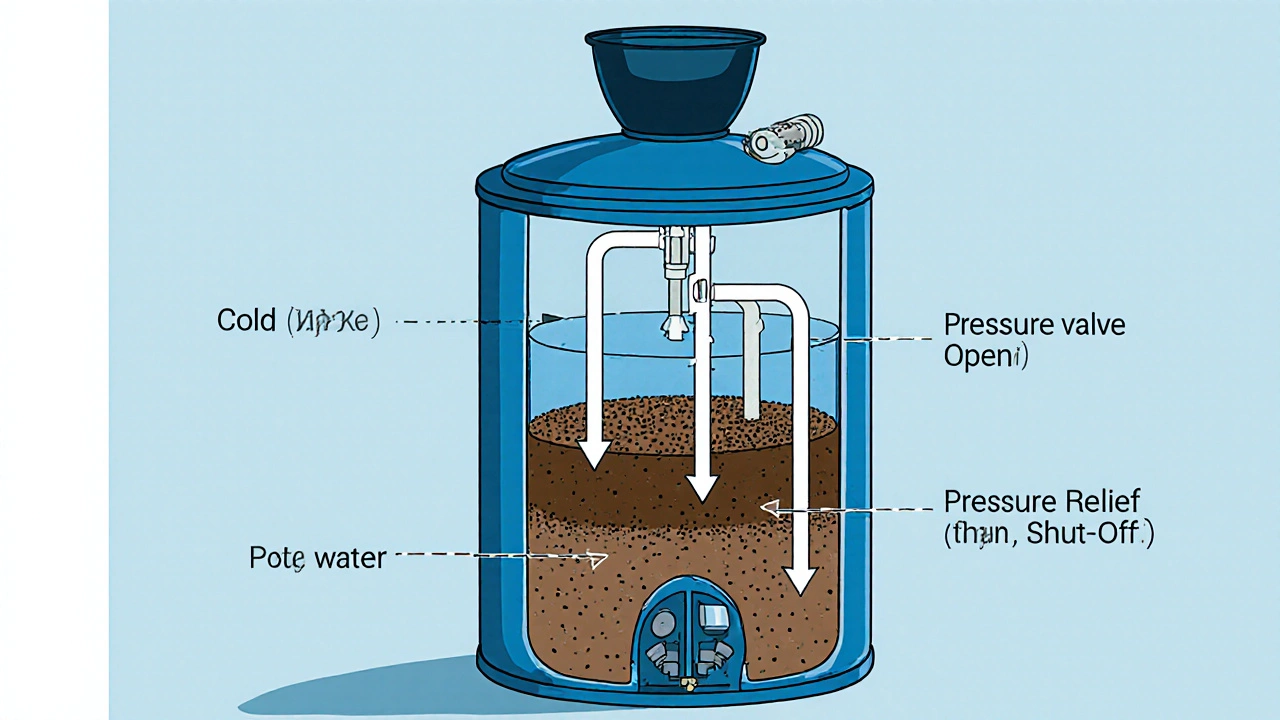
What to watch out for
Most people get through this without issues. But here’s what can go wrong - and how to handle it.
- The drain valve won’t open. Don’t force it. Use a wrench gently. If it’s seized, you might need to replace it. A stuck valve is a sign the heater is older than 8-10 years.
- Water doesn’t drain. Check if the cold water valve is fully closed. Also, make sure the pressure relief valve is open. If neither helps, there may be a blockage inside the tank - call a pro.
- Water is still rusty after flushing. Rust inside the tank means corrosion has started. If you see flakes or brown water after two flushes, your tank is likely nearing the end of its life.
- Leaking after reassembly. Tighten the drain valve slightly. If it still leaks, the valve may be damaged. Replace it with a 3/4-inch brass drain valve (available at hardware stores).
How often should you flush your water heater?
Once a year is the standard. But if you live in an area with hard water - like Adelaide, Murray Bridge, or Whyalla - do it every six months. Hard water contains more minerals, so sediment builds faster.
Keep a simple calendar reminder. Set a date each spring or fall. That way, you won’t forget. And if you’ve just moved into a new home and don’t know when the last flush was, do it right away.
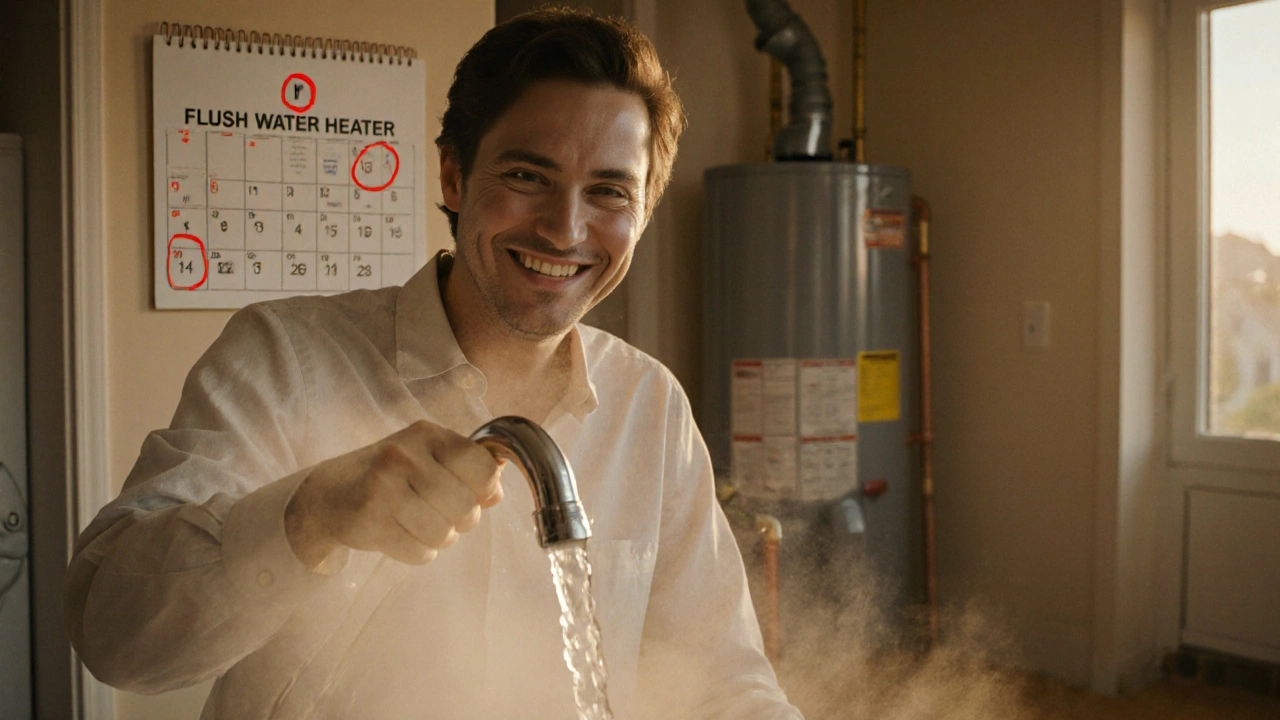
When to call a professional
You can handle most flushes yourself. But call a plumber if:
- Your heater is over 10 years old and you notice repeated sediment buildup.
- The tank is leaking from the sides, not just the valve.
- You smell gas or hear hissing from the unit.
- The water is consistently discolored, even after flushing.
These aren’t DIY fixes. A leaking tank means internal corrosion. Gas smells mean a dangerous risk. Don’t gamble with safety.
Benefits you’ll see after flushing
Within a few days, you’ll notice:
- Hot water lasts longer - no more cold showers halfway through.
- Quieter operation - no more popping or rumbling sounds.
- Lower energy bills - your heater isn’t working overtime.
- More reliable performance - fewer breakdowns during winter.
One Adelaide homeowner, after flushing a 7-year-old electric heater, saw their monthly electricity drop by 18%. That’s about $15 a month saved. Multiply that over five years - that’s $900 in savings, just from a 30-minute job.
Final tip: Consider a water softener
If you’re tired of flushing every few months, think about installing a water softener. It reduces mineral content at the source. While it’s an upfront cost ($1,000-$2,500), it cuts sediment buildup by 80% and protects all your appliances - not just the water heater.
For most homeowners, flushing is the smart, cheap, and safe way to keep hot water flowing. You don’t need to be an expert. Just follow the steps, take your time, and you’ll get the same results as a professional - without the call-out fee.
Can I flush my water heater without turning off the power?
No. Never flush a water heater without turning off the power. For electric heaters, leaving the breaker on can cause the heating element to burn out when the tank is empty. For gas heaters, the burner can overheat and damage the tank lining. Always shut off power first - it’s the #1 safety rule.
How long does it take to flush a water heater?
Plan for 30 to 60 minutes total. The actual draining takes 10-20 minutes, but waiting for the water to cool, attaching the hose, refilling, and restoring power adds time. If your tank is full of sediment, you might need to drain and refill twice to get clear water.
Is it safe to drain water heater water into my yard?
Yes, as long as it’s not too hot. Let the water cool slightly before letting it flow onto grass or soil. The sediment isn’t toxic, but very hot water can kill plants. Avoid draining into stormwater drains - local regulations in Adelaide often prohibit it. A garden or gravel area is best.
What if my water heater doesn’t have a drain valve?
Most modern water heaters have one. If yours doesn’t, it’s likely very old (pre-1990s). In that case, you’ll need to hire a plumber to install a drain valve or replace the unit entirely. Older tanks weren’t designed for easy maintenance, and flushing them safely isn’t practical for homeowners.
Can flushing fix a noisy water heater?
Yes, often. Popping, crackling, or rumbling sounds are caused by water boiling under sediment layers. Flushing removes the sediment and usually stops the noise. If the sounds continue after a full flush, the tank may be damaged - and it’s time to consider replacement.
Will flushing my water heater void the warranty?
No - in fact, most manufacturers require annual flushing to keep the warranty valid. Check your manual, but brands like Rheem, Baxi, and Bosch all list regular maintenance as a condition. Not flushing could be used as a reason to deny a warranty claim if your heater fails.

